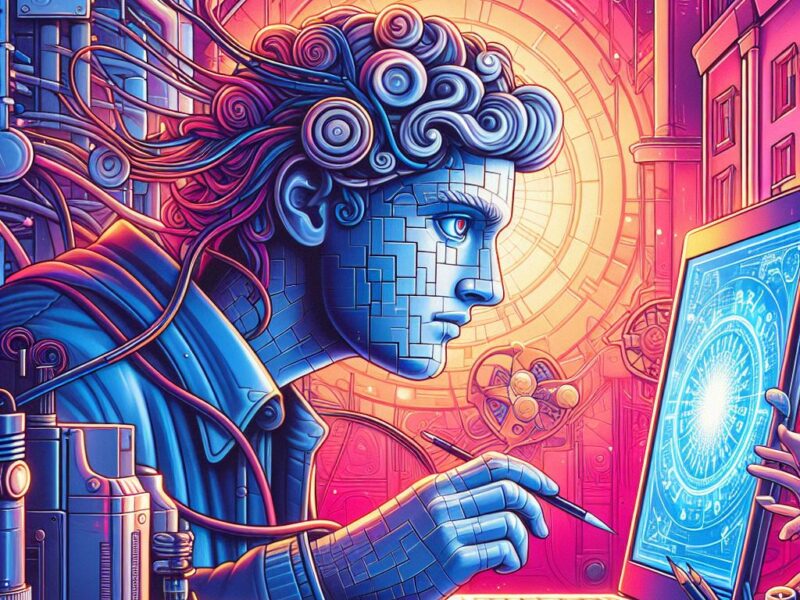“SocialFi” is a fusion of social media and decentralized finance (DeFi). SocialFi platforms offer a Web3 (decentralized) approach to creating, managing and owning social media platforms and the content generated by its participants.
In this beginner’s guide, we will answer the question, “what is SocialFi?” We will also explain the basics of SocialFi, explore its potential applications, and discuss how it could shape the future of online interactions and financial transactions.
Jump To
ToggleWhat is SocialFi?
SocialFi, short for Social Finance, is a concept that combines social media and decentralized finance. SocialFi aims to create a new system for online interactions and financial transactions by leveraging the power of blockchain technology and cryptocurrencies.
In a SocialFi system, users can engage with each other through decentralized social media platforms that are built on blockchain networks. These platforms offer a range of features, such as creating and sharing content, liking and commenting on posts, and even monetizing their social media presence through cryptocurrency rewards.
But, SocialFi goes beyond just social media interactions. It also integrates decentralized finance protocols, allowing users to access a wide range of financial services directly within the social media platform. This can include lending, borrowing, trading, and investing – all powered by smart contracts and cryptocurrencies.
Key Features of SocialFi Platforms
1. Decentralization
SocialFi platforms are built on decentralized blockchain networks, which means that they are not controlled by any single entity. Instead, they are run by a network of nodes that work together to validate transactions and maintain the integrity of the platform.
2. Tokenization
SocialFi platforms often have their native cryptocurrencies or tokens, which serve as the primary means of exchange within the ecosystem. These tokens can be used to reward users for creating and curating content, participating in governance decisions, and accessing financial services.
3. Monetization
One of the most exciting aspects of SocialFi is the ability for users to monetize their social media presence directly. Instead of relying on advertising revenue or sponsored content, users can earn cryptocurrency rewards for their contributions to the platform.
4. Interoperability
SocialFi platforms are designed to be interoperable with other blockchain networks and decentralized applications (dApps). This means that users can seamlessly move their assets and data across different platforms, creating a more connected and efficient ecosystem.
5. Privacy and Security
By leveraging the security and privacy features of blockchain technology, SocialFi platforms can offer users greater control over their personal data and financial transactions. Decentralized identity solutions and encrypted messaging are just a few examples of how SocialFi prioritizes user privacy and security.
Potential Applications of SocialFi
1. Decentralized Social Media
One of the applications of SocialFi is in social media. Decentralized social media platforms, such as Steemit, Hive, and Minds, are already gaining traction among users who value privacy, freedom of expression, and control over their content. These platforms reward users with cryptocurrencies for creating and curating high-quality content, fostering a more engaged and collaborative community.
2. Decentralized Freelancing
SocialFi could also change the way freelancers and content creators monetize their skills and services. Platforms like Sapien and Rally allow users to create their own personal tokens, which can be used to access exclusive content, services, or experiences. This creates a new model for creator-fan relationships, where fans can directly support their favorite creators and participate in their success.
3. Decentralized E-commerce
SocialFi could also be applied to e-commerce, creating decentralized marketplaces where buyers and sellers can transact directly using cryptocurrencies. These marketplaces could leverage social media features, such as user ratings and reviews, to build trust and reputation within the community. Projects like OpenBazaar and Origin Protocol are already exploring this space.
4. Decentralized Governance
SocialFi platforms often incorporate decentralized governance mechanisms, such as user voting and proposal systems. This allows the community to have a say in the direction and development of the platform, creating a more democratic and inclusive ecosystem. Projects like Aave and Uniswap have successfully implemented decentralized governance models, giving users a stake in the future of the platform.
Challenges and Considerations
1. Regulatory Uncertainty
As with many aspects of the cryptocurrency and blockchain space, SocialFi operates in a regulatory gray area. It’s unclear how existing laws and regulations around social media, finance, and data privacy will apply to these new platforms, creating uncertainty for users and developers alike.
2. Scalability and Performance
Decentralized networks often face challenges around scalability and performance, as they rely on a distributed network of nodes to validate transactions and maintain the blockchain. SocialFi platforms will need to find ways to ensure fast and efficient transactions, even as the user base grows.
3. User Adoption
While SocialFi offers many benefits, it may face challenges in terms of user adoption. The learning curve for using cryptocurrencies and navigating decentralized platforms can be steep for some users, and the lack of familiar brands and interfaces may be a barrier to entry.
4. Content Moderation
Decentralized social media platforms face unique challenges when it comes to content moderation and ensuring a safe and healthy community. Without central authorities to enforce rules and remove harmful content, SocialFi platforms will need to develop new models for community self-regulation and dispute resolution.
The Future of SocialFi
Despite these challenges, the future of SocialFi looks bright. As more people become aware of the benefits of decentralized technologies and the importance of privacy and control over their online presence, SocialFi platforms are likely to see increased adoption and innovation.
One of the most exciting aspects of SocialFi is its potential to create new economic opportunities and empower individuals and communities around the world. By enabling users to monetize their content and services directly, without intermediaries taking a cut, SocialFi could help to create a more equitable and inclusive digital economy.
Also, SocialFi could play a key role in the development of the metaverse – a virtual shared space where users can interact with each other and digital objects in real time. As the boundaries between our physical and digital lives continue to blur, SocialFi could provide the infrastructure for new forms of social interaction, commerce, and governance within these virtual worlds.
Key Takeaways
- SocialFi is a combination of social media and decentralized finance, allowing users to interact and access financial services on blockchain-based platforms.
- Key features of SocialFi include decentralization, tokenization, monetization, interoperability, and enhanced privacy and security.
- Potential applications of SocialFi include decentralized social media, freelancing, e-commerce, and governance.
- Challenges facing SocialFi include regulatory uncertainty, scalability and performance issues, user adoption, and content moderation.
- The future of SocialFi looks promising, with the potential to create new economic opportunities, empower individuals and communities, and shape the development of the metaverse.
- Realizing the full potential of SocialFi will require ongoing collaboration and innovation from developers, entrepreneurs, and policymakers.
FAQs
1. What is the difference between SocialFi and traditional social media platforms?
A: SocialFi platforms are decentralized and built on blockchain technology, offering users greater control over their data, content, and financial transactions. They also integrate cryptocurrencies and DeFi protocols, enabling new forms of monetization and economic opportunity.
2. Do I need to know about cryptocurrencies to use SocialFi platforms?
A: While a basic understanding of cryptocurrencies and blockchain technology can be helpful, many SocialFi platforms are designed to be user-friendly and accessible to a wide range of users. Some platforms may offer educational resources or guides to help new users get started.
3. How can I earn money on SocialFi platforms?
A: SocialFi platforms offer a variety of ways to earn money, depending on the specific platform and your skills and interests. Some common methods include creating and sharing content, participating in token-based reward systems, offering freelance services, and engaging in DeFi activities like lending or staking.
4. Are SocialFi platforms safe and secure?
A: SocialFi platforms are built on blockchain technology, which offers inherent security and privacy features. However, as with any online platform, there are always risks involved. It’s important to do your own research, use secure passwords and authentication methods, and be cautious when interacting with unknown users or services.
5. How can I get started with SocialFi?
A: To get started with SocialFi, you can begin by researching the different platforms and projects in this space. Look for platforms that align with your interests and goals, and take the time to familiarize yourself with their features and communities. You may also want to join online forums or social media groups to connect with other users and stay up-to-date on the latest developments in SocialFi.










